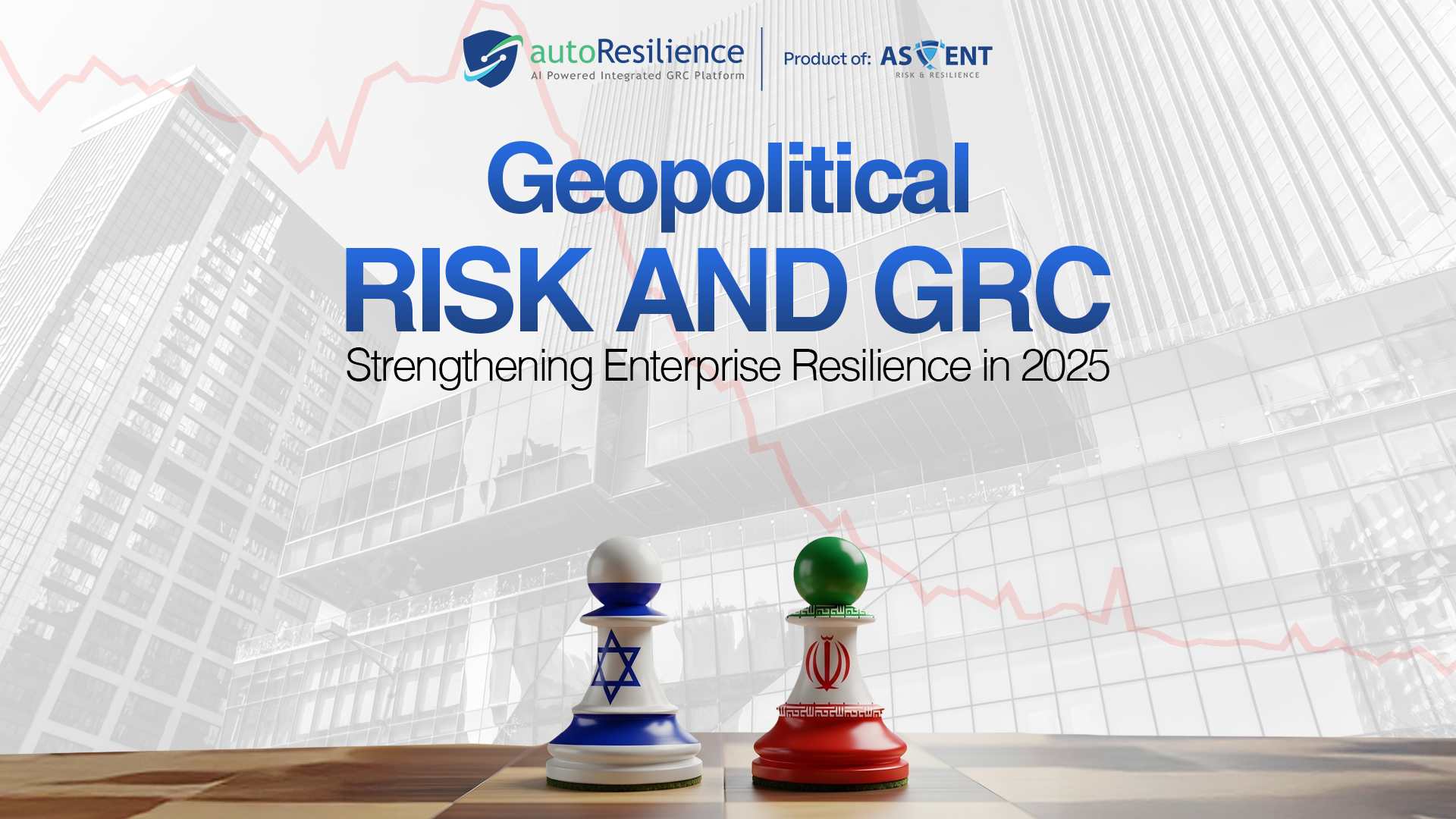Geopolitical risk and GRC (Governance, Risk, and Compliance) are increasingly converging in today’s volatile global landscape. The April 2025 Iran-Israel conflict demonstrated that geopolitical instability can trigger cascading disruptions across supply chains, digital infrastructure, and regulatory landscapes.
Enterprises that treat geopolitical events as external or unlikely are at serious risk. Instead, organizations must embed geopolitical risk and GRC into their resilience strategies—leveraging governance structures, continuity plans, and compliance systems to stay prepared when global tensions rise.
What Is Geopolitical Risk in 2025?
Geopolitical risk encompasses disruptions driven by cross-border political dynamics—armed conflict, sanctions, diplomatic breakdowns, cyberwarfare, or trade restrictions. In 2025, such risks are amplified by digital warfare, information campaigns, and regulatory fragmentation.
Businesses face increasing exposure due to globalization, digital interdependence, and complex vendor networks. Addressing this effectively requires an integrated GRC approach.
The Role of GRC in Geopolitical Resilience
GRC is no longer just a regulatory checklist—it’s the enterprise framework for resilience. Here’s how each pillar supports geopolitical preparedness:
– Governance: Drives decision-making clarity and accountability during crises.
– Risk Management: Identifies, assesses, and mitigates geopolitical exposures.
– Compliance: Ensures regulatory adherence during fast-changing global conditions (e.g., sanctions, data localization).
Lessons from the Iran-Israel Conflict (April 2025)
The April 2025 military conflict highlighted key GRC gaps:
– Poor visibility into supplier risks in affected regions.
– Delayed responses to fast-moving sanctions updates.
– Inadequate business continuity strategies for regional cyber threats.
Organizations with integrated geopolitical risk and GRC programs were better able to assess exposure, align legal actions, and maintain operational stability.
Integrating Geopolitical Risk into GRC: A Framework
To future-proof operations, enterprises must embed geopolitical risk into their GRC stack through:
1. Real-Time Threat Intelligence in Governance Dashboards
2. Scenario Planning and Risk Modeling in ERM Programs
3. Regulatory Watchlists in Compliance Tools (OFAC, EU sanctions, etc.)
4. Cross-functional Crisis Response Teams (Legal, Security, Ops)
5. Geopolitical Risk Scoring for Vendors and Territories
6. Training Executives and Boards on Geopolitical Impacts
Business Continuity and GRC: Twin Engines of Resilience
GRC and Business Continuity Planning (BCP) must be aligned. When geopolitical events occur:
– BCP outlines how operations adapt or relocate.
– GRC ensures those adaptations are governed and compliant.
Example: During the April 2025 conflict, companies with GRC-aligned BCP could legally reroute services, comply with sanctions, and safeguard data flows across borders.
FAQs: Geopolitical Risk and GRC
Q: Is geopolitical risk a board-level concern?
A: Yes. In 2025, geopolitical volatility directly affects revenue, compliance, and brand trust.
Q: How often should geopolitical threats be reassessed?
A: Quarterly—or immediately following elections, conflicts, or sanction changes.
Q: What GRC tools support geopolitical readiness?
A: Tools like RSA Archer, ServiceNow GRC, and MetricStream offer modules to manage geopolitical exposure, third-party risk, and compliance workflows.
Recommended Resources
– Ascent’s Integrated GRC Solutions
– GRC Checklist: Managing Sanctions and Sovereignty Risk
– Control Risks – Global Risk Map
– Brookings – Conflict Risk Tracker
Future proofing with GRC
Geopolitical shocks aren’t going away—but your vulnerability to them can. By embedding geopolitical risk into your GRC systems, your organization moves from reactive to resilient.
The future of enterprise resilience lies in real-time governance, agile continuity planning, and dynamic compliance monitoring. Now is the time to make GRC your geopolitical shield.
📅 Book a Resilience + GRC Readiness Demo













